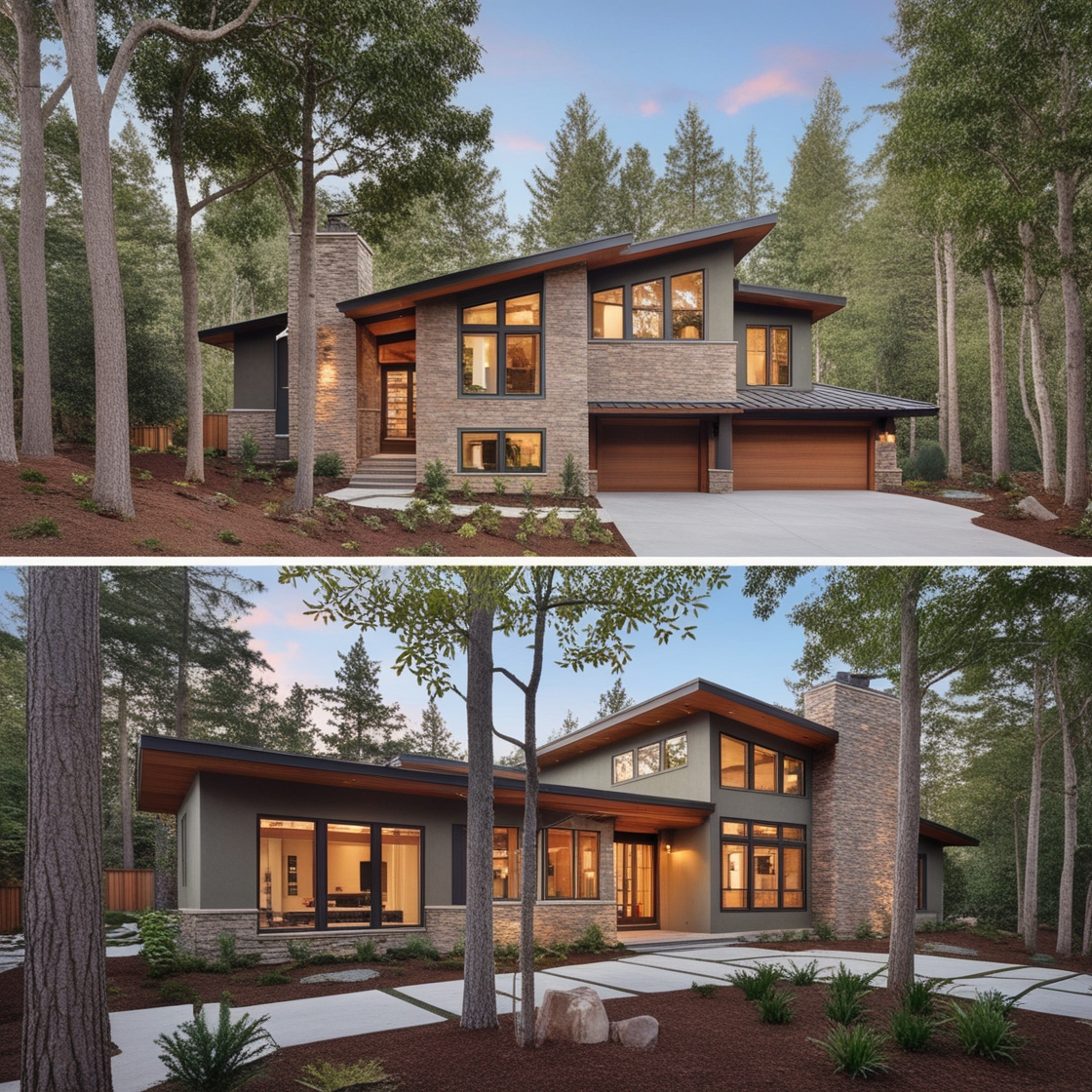Designing a home exterior that blends seamlessly with its surrounding environment is both an art and a science. A well-integrated design not only enhances the beauty of your home but also respects the natural landscape and architectural context of the area. Whether your home is nestled in a forest, perched on a hillside, or located in an urban neighborhood, achieving harmony with the environment involves thoughtful consideration of materials, colors, textures, and overall design principles. Here’s how to create a home exterior that feels like a natural extension of its surroundings.
1. Understand the Local Landscape
The first step in designing a home exterior that blends with the environment is to thoroughly understand the local landscape. Study the natural features, such as the topography, vegetation, and climate, as well as the architectural styles that are prevalent in the area. This will help you choose design elements that complement, rather than compete with, the environment.
- Tip: Take a walk around your property and the surrounding area to observe the natural colors, textures, and patterns. Consider how your home can reflect these elements in its design.
2. Choose Earth-Toned Colors
Color plays a significant role in how well a home blends with its environment. Earth-toned colors, such as browns, greens, and muted grays, are often the best choice for achieving harmony with nature. These colors mimic the natural hues found in soil, rocks, trees, and foliage, allowing your home to blend seamlessly into its surroundings.
- Tip: Opt for a color palette that reflects the environment throughout the year. For example, if your home is surrounded by dense greenery, shades of olive, sage, and taupe can help it blend in during both summer and winter.
3. Use Natural Materials
Incorporating natural materials into your home’s exterior is a powerful way to connect it with the landscape. Stone, wood, and clay are excellent choices that echo the natural environment and lend a timeless quality to your home. These materials not only look organic but also age gracefully, further enhancing the home’s integration with its surroundings over time.
- Tip: Use locally sourced materials when possible. This not only supports the local economy but also ensures that the materials are well-suited to the climate and aesthetic of the area.
4. Consider the Home’s Orientation
The orientation of your home can significantly impact how it interacts with the environment. Designing the home to take advantage of natural light, views, and wind patterns will help it feel more connected to the landscape. For instance, placing large windows on the side of the home that faces a beautiful view can create a seamless transition between indoor and outdoor spaces.
- Tip: Work with an architect or designer to plan the orientation of your home in a way that maximizes natural light and ventilation while minimizing the impact on the landscape.
5. Incorporate Native Landscaping
Landscaping is a crucial aspect of blending your home with its environment. Using native plants that thrive in the local climate will create a natural, low-maintenance landscape that enhances the home’s exterior. Native plants also provide habitat for local wildlife, further integrating your home into the ecosystem.
- Tip: Design the landscape to flow naturally into the surrounding environment. Avoid formal, manicured lawns in favor of more organic shapes and groupings of plants that mimic nature.
6. Design with the Climate in Mind
Climate-responsive design is key to ensuring that your home’s exterior is in harmony with its environment. Consider the local climate when selecting materials, colors, and architectural features. For example, in hot, arid regions, light-colored stucco and clay tiles can help reflect heat, while in colder climates, wood and stone can provide warmth and insulation.
- Tip: Incorporate design elements like overhangs, pergolas, and shading devices that protect the home from harsh weather while still allowing for natural light and ventilation.
7. Minimize Visual Impact
A home that blends with its environment often minimizes its visual impact. This can be achieved by designing a low-profile structure that follows the natural contours of the land. Avoiding overly bold or contrasting elements in favor of more subtle, understated design choices will help the home merge with the landscape rather than dominate it.
- Tip: Consider a single-story or split-level design that follows the slope of the land. Use low walls, recessed lighting, and soft edges to reduce the home’s visual footprint.
8. Incorporate Sustainable Design Practices
Sustainable design practices not only benefit the environment but also enhance the connection between your home and its surroundings. Green building materials, energy-efficient systems, and water conservation techniques can all contribute to a design that respects and preserves the local ecosystem.
- Tip: Integrate features like rainwater harvesting, solar panels, and green roofs to reduce the environmental impact of your home. These features can be designed to blend seamlessly with the home’s exterior.
9. Use Texture to Create Depth
Texture can add depth and interest to your home’s exterior while helping it blend with the environment. Rough, natural textures like stone, wood grain, and textured stucco can mimic the irregularities found in nature, making the home feel more connected to its surroundings.
- Tip: Combine different textures to create a layered effect that adds dimension to the home without overwhelming the design. For example, a stone foundation with wooden siding and a metal roof can create a balanced, harmonious look.
10. Respect the Local Architecture
While it’s important to design a home that suits your personal taste, it’s equally important to respect the architectural traditions of the area. A design that acknowledges and incorporates elements of local architecture will be more likely to blend with the environment and be accepted by the community.
- Tip: Research the architectural history of the area and consider how your design can reflect or reinterpret traditional styles in a contemporary way.
